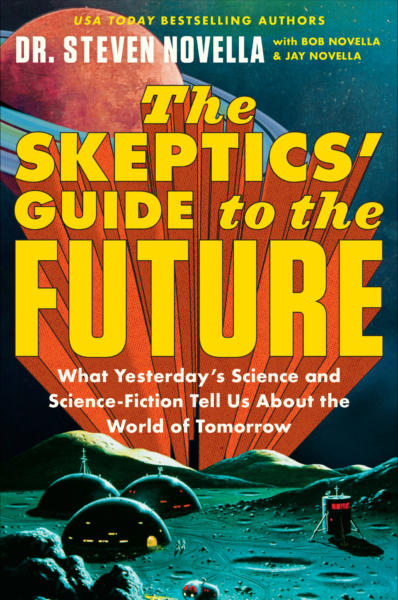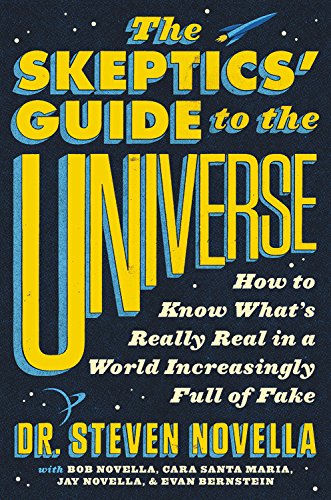Jul
16
2024
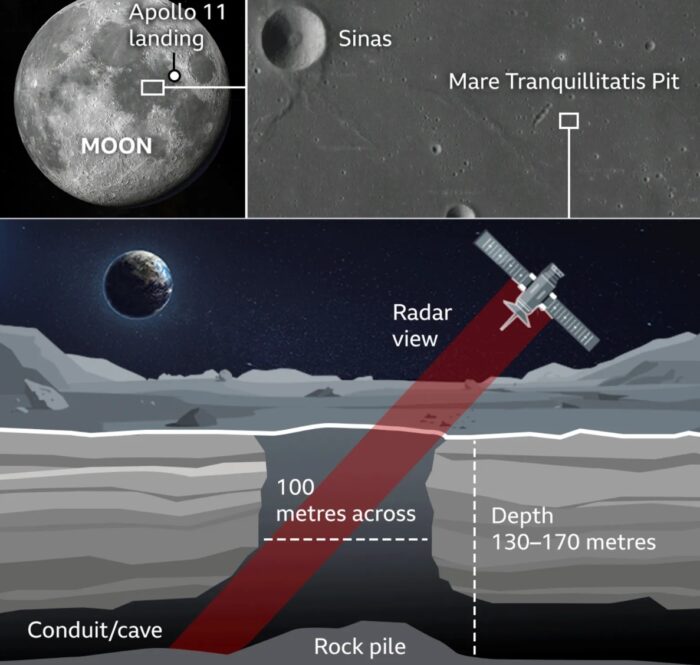 Astronomers have discovered multiple “pits” on the surface of the moon – these look superficially like craters, but on closer inspection are actually vertical pits. There has been considerable speculation that these pits might be cave openings. Now, an analysis of data from the Lunar Reconnaissance Orbiter from 2010 reveals that at least one of these pits is in fact a cave opening.
Astronomers have discovered multiple “pits” on the surface of the moon – these look superficially like craters, but on closer inspection are actually vertical pits. There has been considerable speculation that these pits might be cave openings. Now, an analysis of data from the Lunar Reconnaissance Orbiter from 2010 reveals that at least one of these pits is in fact a cave opening.
The pit is located in the Mare Tranquillitatis, near the site of the Apollo 11 landing (the Sea of Tranquility) and is therefore called the Mare Tranquillitatis Pit (MTP). It is 100 meters across and 130-170 meters deep. The study used radar data at a downward angle which was able to image the sides of the bottom of the pit, showing that there is a possible conduit there for an underground cave system. This conduit is at least tens of meters long, but could be much larger.
While this is exciting, it’s not surprising. One hypothesis is that these lunar pits are “skylights” of underground cave systems, carved out by lava tubes when the Moon was more geologically active. If true, then it’s possible that they are extensive, and can also be quite large. Why is this so exciting?
There are two main reasons NASA and others are interested in lunar caves. One is geological – such cave systems might be billions of years old, and therefore can preserve lunar rocks by protecting them from the radiation and micro meteors that pummel the lunar surface. When we send astronauts back to the Moon (or even just highly capable robots) they could explore these caves and are likely to make some interesting discoveries about the Moon.
But the second application is the most intriguing. I have deliberately buried the lede here, partly because I suspect most readers know where this story is going. Such lunar caves could be ideal locations for future lunar bases. This is for the same reason they are good locations to do some geological investigations on the Moon – the caves are protected. This is something that science fiction shows give very short shrift to, and for this reason perhaps is greatly underappreciated by the public. Space is a very dangerous place, and not just because it’s largely a cold vacuum. Space is full of radiation, and stellar systems are full of fast-moving debris.
Continue Reading »
Jun
11
2024
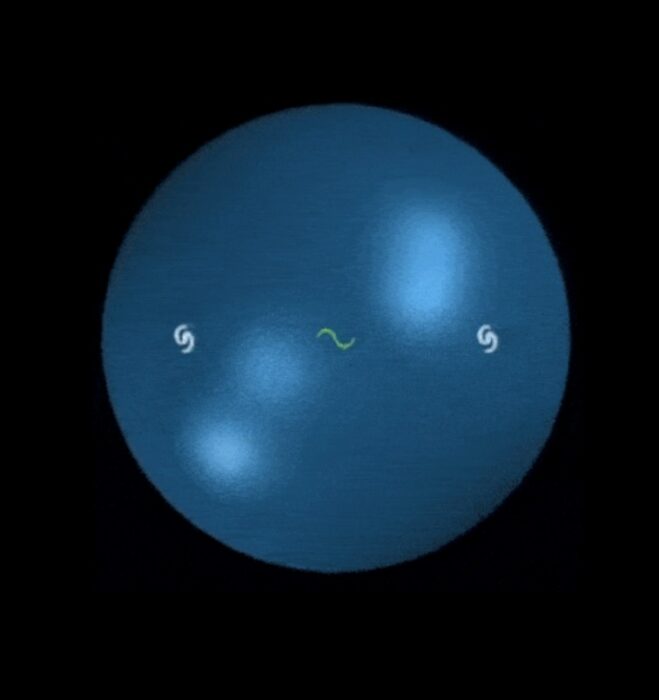 Commenter Lal asks in the topic suggestions:
Commenter Lal asks in the topic suggestions:
“Media reports that light has been travelling from that distant galaxy for 13 and a half billion years, which I assume is true, but this neither represents the original nor the current distance to that galaxy in terms of light years. I would be interested to know where we lie in the expanding universe compared to these distant galaxies.”
This is a good question, and is challenging to grasp. We need experts who have been thinking about this for decades and who actually understand what’s happening and who can explain it well. Here, I think, is an excellent discussion of this very question. I’ll give a quick summary, but for those interested, you may want to read the full article.
The basic background is that, according to modern cosmological theory, which includes the Big Bang, the universe was a singularity – one point that contained all of spacetime and all matter and energy – about 13.7 billion years ago. This point underwent rapid expansion, at first very rapid, called the inflationary period. Then it continued to rapidly expand, although at a much slower pace, although this rate of expansion has been increasing over time due to dark energy. What happens to the universe when it expands? It’s important to note first that the universe is not expanding into space – space-time itself is expanding.
Matter in the universe gets less dense and hot as the universe expands. At first matter was too hot for particles to exist. Once it cooled enough for protons and neutrons to exist, they mostly formed into hydrogen, but that was still too hot to hold onto electrons so the matter was all plasma. That eventually cooled enough for hydrogen (and some helium and a tiny bit of lithium) atoms to exist – at about 380,000 years after the Big Bang. Since then the matter in the universe has continued to cool and become less dense. However, it was also able to form stars, galaxies, heavier elements, and then lots of interesting things like people.
Continue Reading »
Feb
12
2024
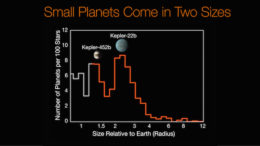 As of this writing, there are 5,573 confirmed exoplanets in 4,146 planetary systems. That is enough exoplanets, planets around stars other than our own sun, that we can do some statistics to describe what’s out there. One curious pattern that has emerged is a relative gap in the radii of exoplanets between 1.5 and 2.0 Earth radii. What is the significance, if any, of this gap?
As of this writing, there are 5,573 confirmed exoplanets in 4,146 planetary systems. That is enough exoplanets, planets around stars other than our own sun, that we can do some statistics to describe what’s out there. One curious pattern that has emerged is a relative gap in the radii of exoplanets between 1.5 and 2.0 Earth radii. What is the significance, if any, of this gap?
First we have to consider if this is an artifact of our detection methods. The most common method astronomers use to detect exoplanets is the transit method – carefully observe a star over time precisely measuring its brightness. If a planet moves in front of the star, the brightness will dip, remain low while the planet transits, and then return to its baseline brightness. This produces a classic light curve that astronomers recognize as a planet orbiting that start in the plane of observation from the Earth. The first time such a dip is observed that is a suspected exoplanet, and if the same dip is seen again that confirms it. This also gives us the orbital period. This method is biased toward exoplanets with short periods, because they are easier to confirm. If an exoplanet has a period of 60 years, that would take 60 years to confirm, so we haven’t confirmed a lot of those.
There is also the wobble method. We can observe the path that a star takes through the sky. If that path wobbles in a regular pattern that is likely due to the gravitational tug from a large planet or other dark companion that is orbiting it. This method favors more massive planets closer to their parent star. Sometimes we can also directly observe exoplanets by blocking out their parent star and seeing the tiny bit of reflected light from the planet. This method favors large planets distant from their parent star. There are also a small number of exoplanets discovered through gravitational microlensing, and effect of general relativity.
None of these methods, however, explain the 1.5 to 2.0 radii gap. It’s also likely not a statistical fluke given the number of exoplanets we have discovered. Therefore it may be telling us something about planetary evolution. But there are lots of variables that determine the size of an exoplanet, so it can be difficult to pin down a single explanation.
Continue Reading »
Jan
12
2024
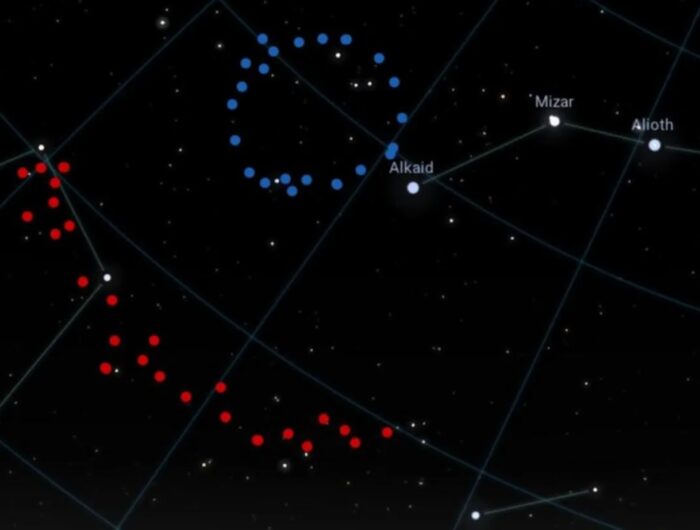 University of Central Lancashire (UCLan) PhD student Alexia Lopez, who two years ago discovered a giant arc of galaxy clusters in the distant universe, has now discovered a Big Ring. This (if real) is one of the largest structures in the observable universe at 1.3 billion light years in diameter. The problem is – such a large structure should not be possible based on current cosmological theory. It violates what is known as the Cosmological Principle (CP), the notion that at the largest scales the universe is uniform with evenly distributed matter.
University of Central Lancashire (UCLan) PhD student Alexia Lopez, who two years ago discovered a giant arc of galaxy clusters in the distant universe, has now discovered a Big Ring. This (if real) is one of the largest structures in the observable universe at 1.3 billion light years in diameter. The problem is – such a large structure should not be possible based on current cosmological theory. It violates what is known as the Cosmological Principle (CP), the notion that at the largest scales the universe is uniform with evenly distributed matter.
The CP actually has two components. One is called isotropy, which means that if you look in any direction in the universe, the distribution of matter should be the same. The other component is homogeneity, which means that wherever you are in the universe, the distribution of matter should be smooth. Of course, this is only true beyond a certain scale. At small scale, like within a galaxy or even galaxy cluster, matter is not evenly distributed, and it does matter which direction you look. But at some point in scale, isotropy and heterogeneity are the rule. Another way to look at this is – there is an upper limit to the size of any structure in the universe. The Giant Arc and Big Ring are both too big. If the CP is correct, they should not exist. There are also a handful of other giant structures in the universe, so these are not the first to violate the CP.
The Big Ring is just that, a two-dimensional structure in the shape of a near-perfect ring facing Earth (likely not a coincidence but rather the reason it was discoverable from Earth). Alexia Lopez later discovered that the ring is actually a corkscrew shape. The Giant Arc is just that, the arc of a circle. Interestingly, it is in the same region of space and the same distance as the Big Ring, so the two structures exist at the same time and place. This suggests they may be part of an even bigger structure.
How certain are we that these structures are real, and not just a coincidence? Professor Don Pollacco, of the department of physics at the University of Warwick, said the probability of this being a statistical fluke is “vanishingly small”. But still, it seems premature to hang our hat on these observations just yet. I would like to see some replications and attempts at poking holes in Lopez’s conclusions. That is the normal process of science, and it takes time to play out. But so far, it seems like solid work.
Continue Reading »
Jan
04
2024
 This is one of the biggest thought experiments in science today – as we look for life elsewhere in the universe, what should we be looking for, exactly? Other stellar systems are too far away to examine directly, and even our most powerful telescopes can only resolve points of light. So how do we tell if there is life on a distant exoplanet? Also, how could we detect a distant technological civilization?
This is one of the biggest thought experiments in science today – as we look for life elsewhere in the universe, what should we be looking for, exactly? Other stellar systems are too far away to examine directly, and even our most powerful telescopes can only resolve points of light. So how do we tell if there is life on a distant exoplanet? Also, how could we detect a distant technological civilization?
Here is where the thought experiment comes in. We know what life on Earth is like, and we know what human technology is like, so obviously we can search for other examples of what we already know. But the question is – how might life different from life on Earth be detected? What are the possible signatures of a planet covered in living things that perhaps look nothing like life on Earth. Similarly, what alien technologies might theoretically exist, and how could we detect them?
A recent paper explores this question from one particular angle – are there conditions on a planet that are necessary for the development of technology? They hypothesize that there is an “oxygen bottleneck”, a minimum concentration of oxygen in the atmosphere of a planet, that is necessary for the development of advanced technology. Specifically they argue that open air combustion, which requires a partial pressure (PO2) of oxygen of ≥ 18% (it’s about 21% on Earth), is necessary for fire and metallurgy, and that these are necessary stepping stones on the path to advanced technology.
Continue Reading »
Dec
19
2023
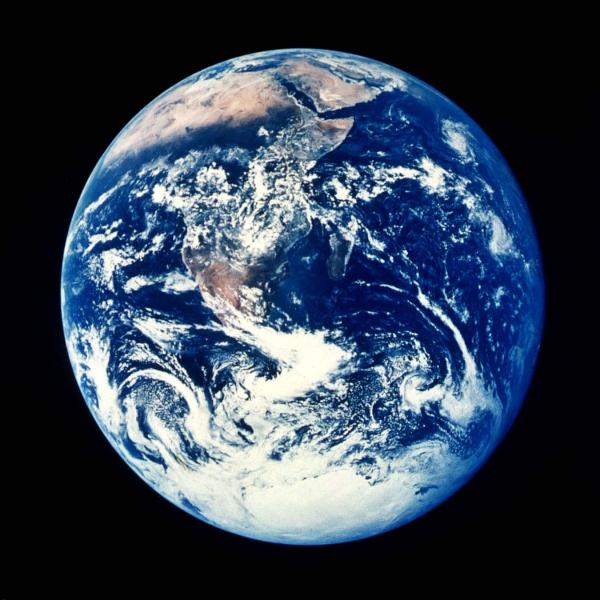 One of the biggest questions of exoplanet astronomy is how many potentially habitable planets are out there in the galaxy. By one estimate the answer is 6 billion Earth-like planets in the Milky Way. But of course we have to set parameters and make estimates, so this number can vary significantly depending on details.
One of the biggest questions of exoplanet astronomy is how many potentially habitable planets are out there in the galaxy. By one estimate the answer is 6 billion Earth-like planets in the Milky Way. But of course we have to set parameters and make estimates, so this number can vary significantly depending on details.
And yet – how many exoplanets have we discovered so far that are “Earth-like”, meaning they are a rocky world orbiting a sun-like star in the habitable zone, not tidally locked to their parent star, with the potential for liquid water on the surface? Zero. Not a single one, out of the over 5,500 exoplanets confirmed so far. This is not a random survey, however, because it is biased by the techniques we use to discover exoplanets, which favor larger worlds and worlds closer to their stars. But still, zero is a pretty disappointing number.
I am old enough to remember when the number of confirmed exoplanets was also zero, and when the first one was discovered in 1995. Basically since then I have been waiting for the first confirmed Earth-like exoplanet. I’m still waiting.
A recent simulation, if correct, may mean there are even fewer Earth-like exoplanets than we think. The study looks at the transition from a planet like Earth to one like Venus, where a runaway greenhouse effect leads to a dry and sterile planet with a surface temperature of hundreds of degrees. The question being explored by this simulation is this – how delicate is the equilibrium we have on Earth? What would it take to tip the Earth into a similar climate as Venus? The answer is – not much.
Continue Reading »
Oct
24
2023
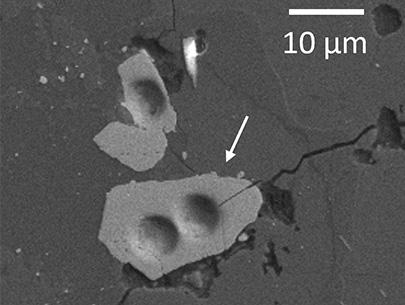 There are a few interesting stories lurking in this news item, but lets start with the top level – a new study revises the minimum age of the Moon to 4.46 billion years, 40 million years older than the previous estimate. That in itself is interesting, but not game-changing. It’s really a tweak, an incremental increase in precision. How scientists made this calculation, however, is more interesting.
There are a few interesting stories lurking in this news item, but lets start with the top level – a new study revises the minimum age of the Moon to 4.46 billion years, 40 million years older than the previous estimate. That in itself is interesting, but not game-changing. It’s really a tweak, an incremental increase in precision. How scientists made this calculation, however, is more interesting.
The researchers studied zircon crystals brought back from Apollo 17. Zircon is a crystal silicate that often contains some uranium. These crystals would have formed when the magma surface of the Moon cooled. The current dominant theory is that a Mars-sized planet slammed into the proto-Earth about four and a half billion years ago, creating the Earth as we know it. The collision also threw up a tremendous amount of material, with the bulk of it coalescing into our Moon. The surface of both worlds would have been molten from the heat of the collision, but it is easier to date the Moon because the surface is better preserved. The surface of the Earth undergoes constant turnover of one type or another, while the lunar surface is ancient. So dating the Moon tells us something about the age of the Earth also.
The method of dating employed in this latest study is called atom probe tomography. First they use an ion beam microscope to carve the tip of a crystal to a sharp point. Then they use UV lasers to evaporate atoms off the tip of the crystal. These atoms pass through a mass spectrometer, which uses the time it takes to pass through as a measure of mass, which identifies the element. The researchers are interested in the proportion of uranium to lead. Uranium is a common element found in zircon, and it also undergoes radioactive decay into lead at a known rate. In any sample you can therefore use the ratio of uranium to lead to calculate the age of that sample. Doing so yielded an age of 4.46 billion years old – the new minimum age of the Moon. It’s possible the Moon could be older than this, but it can’t be any younger.
Continue Reading »
Sep
18
2023
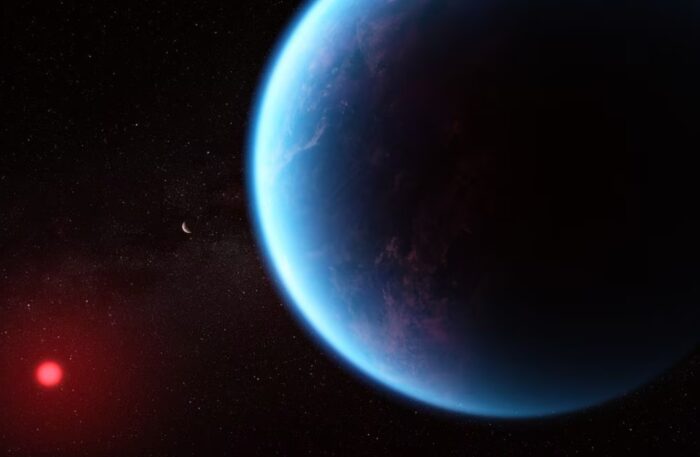 The James Webb Space Telescope spectroscopic analysis of K2-18b, an exoplanet 124 light years from Earth, shows signs that the atmosphere may contain dimethyl sulphide (DMS). This finding is more impressive when you know that DMS on Earth is only produced by living organisms, not by any geological process. The atmosphere of K2-18b also contains methane and CO2, which could be compatible with liquid water on the surface. Methane is also a possible signature of life, but it can also be produced by geological processes. This is pretty exciting, but the astronomers caution that this is a preliminary result. It must be confirmed by more detailed analysis and observation, which will likely take a year.
The James Webb Space Telescope spectroscopic analysis of K2-18b, an exoplanet 124 light years from Earth, shows signs that the atmosphere may contain dimethyl sulphide (DMS). This finding is more impressive when you know that DMS on Earth is only produced by living organisms, not by any geological process. The atmosphere of K2-18b also contains methane and CO2, which could be compatible with liquid water on the surface. Methane is also a possible signature of life, but it can also be produced by geological processes. This is pretty exciting, but the astronomers caution that this is a preliminary result. It must be confirmed by more detailed analysis and observation, which will likely take a year.
According to NASA:
K2-18 b is a super Earth exoplanet that orbits an M-type star. Its mass is 8.92 Earths, it takes 32.9 days to complete one orbit of its star, and is 0.1429 AU from its star. Its discovery was announced in 2015.
This planet was discovered with the transit method, so we have some idea of its radius and therefore density. It’s surface gravity is likely about 12 m/s^2 (Earth’s is 9.8). It has a hydrogen-rich atmosphere, which would explain the methane without the need for life. It orbits a red dwarf, and is likely tidally locked, or in a tidal resonance orbit. It receives an amount of radiation from its star similar to Earth. The big question – is K2-18 b potentially habitable?
Continue Reading »
Aug
25
2023
 I know you don’t need one more thing to worry about, but I have already written about the growing problem of space debris. At least this update is about a mission to help clear some of that debris – ClearSpace-1. This is an ESA mission which they contracted out to a Swiss company, Clearspace SA, who is making a satellite whose purpose is to grab large pieces of space junk and de-orbit it.
I know you don’t need one more thing to worry about, but I have already written about the growing problem of space debris. At least this update is about a mission to help clear some of that debris – ClearSpace-1. This is an ESA mission which they contracted out to a Swiss company, Clearspace SA, who is making a satellite whose purpose is to grab large pieces of space junk and de-orbit it.
The problem this mission is trying to solve is the fact that we have put millions of pieces of debris into various orbits around the Earth. While space is big, usable near-Earth orbits are finite, and if you put millions of pieces of debris there zipping around at fast speeds, there will be collisions. The worst-case scenario is what’s called a Kessler cascade, in which a collision causes more debris which then increases the probability of further collisions which increases the amount of debris, and the cycle continues. This won’t be an event so much as a process that unfolds over a long period of time. But it has the potential of rendering Earth orbit increasingly dangerous to the point of being unusable. It also makes the task of cleaning up orbit exponentially more difficult.
The Clearspace craft looks like a mechanical squid with 4 arms which can grab tightly onto a large piece of space debris. The planned first mission with target the upper stage of Vespa, part of the ESA Vega launcher. This is a 112 kg target. Once it grabs the debris it with then undergo a controlled deorbit. The mission is planned for 2026, and if successful will be the first mission of its kind. This is a proof-of-concept mission, because removing one piece of large debris is insignificant compared to how much debris is already up there. But we need to demonstrate that the whole system works, and we also need to confirm how much each such mission will cost.
Continue Reading »
Jul
20
2023
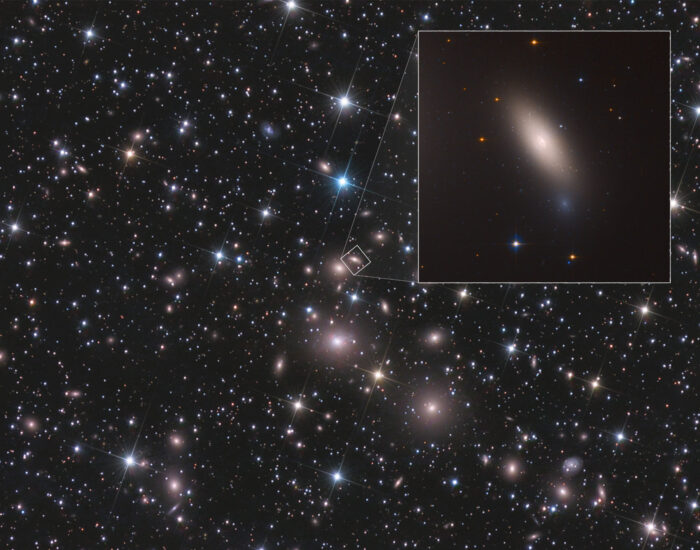 Dark matter is one of the greatest current scientific mysteries. It’s a fascinating story playing out in real time, although over years, so you have to be patient. Future generations might be able to binge the dark matter show, but not us. We have to wait for each episode to drop. Another episode did just drop, in the form of an analysis of the massive relic galaxy NGC 1277, but let’s get caught up before we watch this episode.
Dark matter is one of the greatest current scientific mysteries. It’s a fascinating story playing out in real time, although over years, so you have to be patient. Future generations might be able to binge the dark matter show, but not us. We have to wait for each episode to drop. Another episode did just drop, in the form of an analysis of the massive relic galaxy NGC 1277, but let’s get caught up before we watch this episode.
The term “dark matter” was coined by astronomer Fritz Zwicky in 1933 as one possible explanation for the rotation of the Coma Galaxy Cluster. The galaxies were essentially moving too quickly, implying that there was more gravity (and hence more matter) present in the cluster than was observed. This matter could not be seen, therefore it was dark. The notion was a mere footnote, however, until the 1970s when astronomer Vera Rubin analyzed the rotation curves of many individual galaxies. She found that galaxies were rotating too quickly. The stars should be flying apart because there was insufficient gravity to hold them together (or alternatively they should be rotating more slowly). There must be more gravity that can be seen. The notion of dark matter was therefore solidified, and has been a matter of debate ever since.
Half a century after Rubin confirmed the existence of dark matter, we still don’t know what it is. It must be some kind of particle that does not interact much with other stuff in the universe, does not give off or reflect radiation, but possesses significant mass and therefore gravity. There are candidate particles, such as wimps (weakly interacting massive particles), MACHOs (massive astrophysical compact halo object), axions (particles with a tiny amount of mass but could be very common) or perhaps even several particles currently not accounted for in the standard model of particle physics.
This is one of the exciting things about dark matter – when we figure out what dark matter is, it could break the standard model, pointing the way to a new and deeper understanding of physics. But how certain are we that dark matter exists? To a degree the existence of dark matter is an argument from ignorance – it is a placeholder filling in a gap in our knowledge. We can only infer its existence because we cannot explain with our current models of gravity how stuff is moving in the universe. Perhaps our current models of gravity are wrong?
Continue Reading »
 Astronomers have discovered multiple “pits” on the surface of the moon – these look superficially like craters, but on closer inspection are actually vertical pits. There has been considerable speculation that these pits might be cave openings. Now, an analysis of data from the Lunar Reconnaissance Orbiter from 2010 reveals that at least one of these pits is in fact a cave opening.
Astronomers have discovered multiple “pits” on the surface of the moon – these look superficially like craters, but on closer inspection are actually vertical pits. There has been considerable speculation that these pits might be cave openings. Now, an analysis of data from the Lunar Reconnaissance Orbiter from 2010 reveals that at least one of these pits is in fact a cave opening.
 Commenter Lal asks in the topic suggestions:
Commenter Lal asks in the topic suggestions: As of this writing, there are
As of this writing, there are  University of Central Lancashire (UCLan) PhD student Alexia Lopez, who two years ago discovered a giant arc of galaxy clusters in the distant universe,
University of Central Lancashire (UCLan) PhD student Alexia Lopez, who two years ago discovered a giant arc of galaxy clusters in the distant universe, This is one of the biggest thought experiments in science today – as we look for life elsewhere in the universe, what should we be looking for, exactly? Other stellar systems are too far away to examine directly, and even our most powerful telescopes can only resolve points of light. So how do we tell if there is life on a distant exoplanet? Also, how could we detect a distant technological civilization?
This is one of the biggest thought experiments in science today – as we look for life elsewhere in the universe, what should we be looking for, exactly? Other stellar systems are too far away to examine directly, and even our most powerful telescopes can only resolve points of light. So how do we tell if there is life on a distant exoplanet? Also, how could we detect a distant technological civilization? One of the biggest questions of exoplanet astronomy is how many potentially habitable planets are out there in the galaxy.
One of the biggest questions of exoplanet astronomy is how many potentially habitable planets are out there in the galaxy.  There are a few interesting stories lurking
There are a few interesting stories lurking  The James Webb Space Telescope spectroscopic analysis of K2-18b, an exoplanet 124 light years from Earth, shows
The James Webb Space Telescope spectroscopic analysis of K2-18b, an exoplanet 124 light years from Earth, shows  I know you don’t need one more thing to worry about, but I have already written about the
I know you don’t need one more thing to worry about, but I have already written about the  Dark matter is one of the greatest current scientific mysteries. It’s a fascinating story playing out in real time, although over years, so you have to be patient. Future generations might be able to binge the dark matter show, but not us. We have to wait for each episode to drop.
Dark matter is one of the greatest current scientific mysteries. It’s a fascinating story playing out in real time, although over years, so you have to be patient. Future generations might be able to binge the dark matter show, but not us. We have to wait for each episode to drop. 



